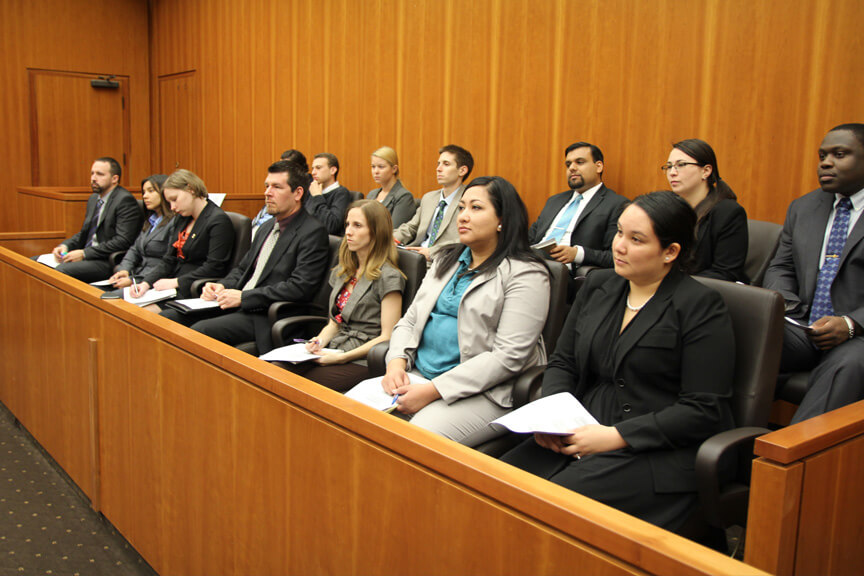 You may be involved in a pregnancy discrimination or other type of employment case. These cases can be difficult and expensive. One factor in favor of investing the resources is that you might get in front of a jury—a jury that could get angry at your former employer and award a significant verdict.
You may be involved in a pregnancy discrimination or other type of employment case. These cases can be difficult and expensive. One factor in favor of investing the resources is that you might get in front of a jury—a jury that could get angry at your former employer and award a significant verdict.
Of course, that would be fantastic. But get this: a judge could still pull the rug out from under you and actually reverse the verdict or substantially reduce the verdict.
That’s why employees will sometimes settle a case for less than a jury verdict even after winning at trial. We wrote about such a case in this article: Autozone Agrees to Drop Challenge to $186 Million Pregnancy Discrimination Case.
But here is the good news: a judge can reverse a verdict, but only in very limited circumstances, as evidenced by Brown v. YRC, Inc., No. 11-3001, 2012 WL 3064831 (10th Cir. July 30, 2012).
Here is an overview of the case:
Mary Brown accepted a job as an HR specialist with YRC, Inc. in November 2006. Before accepting the offer, Brown sent an e-mail to Stacy Beecher, the human resources supervisor who offered her the job, informing her that she was pregnant and that she would need to take pregnancy leave starting in late May. Brown didn’t know it at the time, but the job’s busiest time of the year was from May through August. Brown didn’t get a reply. She accepted the job offer anyway.
Pregnant Employee’s Ups and Downs at Work
 Brown was trained by Shannon Bayre, whose boss was Lindsay Jordan. Jordan met with Bayre and discussed Brown in December, then followed up with an e-mail. Bayre wrote that Brown took few notes, asked questions repeatedly about the same basic processes, and wasn’t receptive to the training. These concerns were not shared with Brown.
Brown was trained by Shannon Bayre, whose boss was Lindsay Jordan. Jordan met with Bayre and discussed Brown in December, then followed up with an e-mail. Bayre wrote that Brown took few notes, asked questions repeatedly about the same basic processes, and wasn’t receptive to the training. These concerns were not shared with Brown.
In January 2007, the three met to discuss Brown’s development plan for the upcoming year. Brown raised the issue of her forthcoming maternity leave. Jordan became upset about the leave and said something to the effect of, “You’re not going to be here during our busy season anyway. Why don’t you just learn your job?”
Afterward, Brown received conflicting messages about her performance:
- Three days after the meeting, Beecher told Brown she was concerned about her training progress and told her she wouldn’t be taking over a position as planned.
- Beecher also sent Brown an e-mail (which was edited by Jordan) that criticized for her indifference to the training process and her resistance to the YRC way of doing things.
- A few days later, Beecher complimented Brown on a training session and gave her another compliment after the completion of a complex assignment.
- The following day, Brown discovered she was nominated by another HR specialist for an award recognizing co-worker excellence.
On January 15, Beecher fired Brown. She was about six months pregnant, and her pregnancy was visible. Brown sued YRC for sex and pregnancy discrimination under federal laws.
Jury Finds for Employee, and Judge Reverses Decision
 During litigation, Brown established a prima facie case of discrimination, which is a necessary step to avoid having the case dismissed: she belonged to a protected class (female and pregnant), she performed satisfactorily, but she was fired under circumstances that raise an inference of discriminatory intent by the ex-employer. YRC gave a nondiscriminatory reason for its actions: Brown wasn’t progressing satisfactorily with her training. The judge decided there were outstanding facts that needed to be determined, and the case went to trial.
During litigation, Brown established a prima facie case of discrimination, which is a necessary step to avoid having the case dismissed: she belonged to a protected class (female and pregnant), she performed satisfactorily, but she was fired under circumstances that raise an inference of discriminatory intent by the ex-employer. YRC gave a nondiscriminatory reason for its actions: Brown wasn’t progressing satisfactorily with her training. The judge decided there were outstanding facts that needed to be determined, and the case went to trial.
Both sides presented their cases, and YRC asked the judge to decide in its favor and not give the case to the jury because Brown hadn’t presented enough evidence to support her case. The judge declined to do so, and the jury found in Brown’s favor, awarding her more than $75,000 in damages. YRC asked the judge to overturn the verdict, which he did, because he thought the verdict was only based on unsupported speculation. Ms. Brown appealed. The Court of Appeals for the Tenth Circuit agreed with her that there was enough evidence to support the jury’s verdict.
Appellate Court Rules in Favor of Brown
When a judge is asked to overturn a jury verdict, he or she can’t decide the outcome of the case based on how he or she interprets the evidence. The jury is given leeway about how much weight certain evidence should be given and which witnesses are credible.
In its decision, the appellate court laid out a very high standard for YRC to be successful:
- the appellate court would view all evidence in the light most favorable to the jury’s verdict, and
- YRC would be entitled to judgment only if all the evidence viewed in that light revealed no legally sufficient evidentiary basis to find for Brown.
Under this standard, the appellate court found that there was sufficient evidence for the jury to infer that Brown carried her burden of proof and that YRC’s reasons for firing Brown were a cover-up for discrimination.
Brown could establish pretext (to show that YRC’s given explanation wasn’t credible) by showing weaknesses, inconsistencies, or contradictions in the employer’s explanation. The appellate court ruled that Brown had done so and that the jury could decide Brown’s witnesses were more credible, especially considering that neither Bayre nor Beecher could cite specific concerns about Brown’s performance during pretrial depositions.
The appellate court stated that the jury could reasonably infer a discriminatory motivation based on two facts:
- Jordan’s statement that Brown should just learn her job because she would be on maternity leave during YRC’s busy season, and
- Brown was fired less than two weeks after Jordan expressed aggravation with her maternity leave.
Summing It Up
When a jury reaches a verdict, a judge will normally defer to that decision unless jurors clearly made a decision not based on the evidence presented.
Nevertheless, it is not uncommon for an employer to ask a court to overturn a jury verdict. As this case establishes, however, that can be an uphill climb.
What’s the moral of the story for you if you are either thinking about or engaged in employment litigation? The jury verdict remains the gold standard. If you can get to that point (many cases do not), then it is still your best chance at getting something close to justice.





